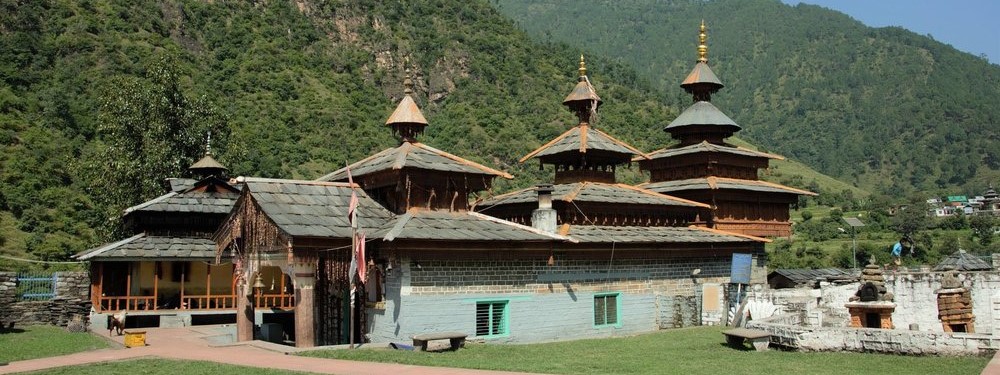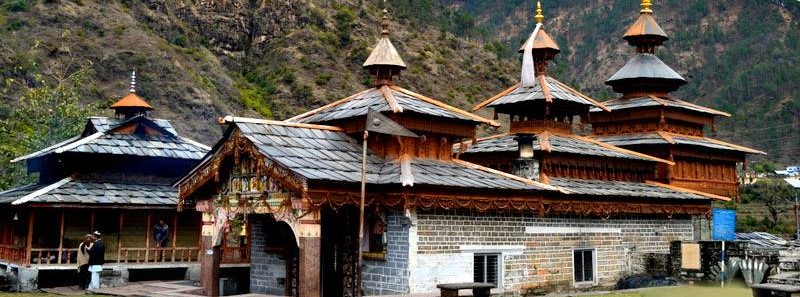

Mahasu Devta Temple, Hanol
About Mahasu Devta Temple, Hanol
The Sacred Enigma of Mahasu Devta Temple in Hanol, Uttarakhand
Nestled in the serene hills of Uttarakhand, the Mahasu Devta Temple in Hanol stands as a testament to the rich cultural and spiritual heritage of the region. Mahashu Deta Temple Hanol is a revered shrine located in the Hanol village of the Tons Valley in Uttarakhand, India. The temple is dedicated to Mahasu Devta, who is believed to be an incarnation of Lord Shiva and is highly venerated by the locals. The temple is situated at an altitude of around 1,800 meters above sea level, surrounded by lush green forests and breathtaking views of the Himalayan ranges. Situated amidst lush greenery and towering mountains, this ancient temple holds a significant place in the hearts of the locals and draws devotees and tourists alike. Lets we delve into the mystical aura surrounding the Mahasu Devta Temple, exploring its history, architecture, and the enduring beliefs that have sustained its reverence over the centuries.
Mahasu Devta holds the esteemed position of an ancient deity in the Western Himalayan Region of Uttarakhand. Revered as a god-king, his influence spans across the Jaunsar-Bawar Regions of District Dehradun, encompassing areas such as Bangan and Fateh Parvat in Uttarkashi, all within the state of Uttarakhand. Additionally, Mahasu's divine presence extends to the erstwhile Simla Hill States of Himachal Pradesh, covering various parts of districts including Simla, Solan, Kinnaur, and Sirmaur. This expansive domain underscores the widespread significance and veneration of Mahasu as a sacred and revered deity in the Western Himalayan Region.
Situated in the Jaunsar Bawar region of Uttarakhand, Hanol village is approximately 190 km from Dehradun and 156 km from Mussoorie. The temple's location in this scenic locale adds to its charm, making it not only a religious and cultural landmark but also a testament to the historical and architectural richness of the region.
Historical Significance:
Mahasu Devta Temple has a history that dates back centuries, shrouded in the mists of time. Dedicated to Mahasu Devta, a local deity believed to be the protector of the region, the temple is a spiritual hub for the indigenous communities in the Uttarakhand Himalayas. Legend has it that Mahasu Devta was an incarnation of Lord Shiva, and the temple was built to honor his divine presence.
The construction of the Hanol Mahasu Devta Temple is credited to Pandit Mihirkul Hun, a member of the Hun dynasty. Situated in the picturesque village of Hanol, within the Jaunsar Bawar region of Uttarakhand, this temple stands as a magnificent exemplar of Hun architectural style, representing a priceless heritage of art and culture. Tradition holds that it was erected by Hun Bhat, with the term "Bhat" signifying a warrior. Notably, the village itself, Hanol, derives its name from Hun Bhat, emphasizing its connection to the Hun warrior heritage.
The Mythology of Mahasu Devta
Mahasu Devta manifests in a unique quadruple form, embodying the essence of four brothers. Within the Mahasu Kingdom, these divine siblings are Bashik, presently considered the eldest, followed by Bautha and Chalda Mahasu in the middle, and Pabasi, the youngest among them.In the initial era of Kaliyuga, Uttarakhand found itself besieged by demons, with the formidable Kirmir emerging as the most menacing. This demonic force had devoured the six sons of a virtuous Brahmin named Huna Bhaat. When the malevolent gaze of the demon turned towards the Brahmin's seventh son, Kirtaka, Huna Bhaat's wife, implored Lord Shiva for protection. Acting on divine counsel, the couple sought the guidance of Hatkeshwari Devi of Hatkoti, Himachal Pradesh, who advised them to journey to the Kashmir Mountains and seek the aid of Lord Shiva through prayer.
Upon returning home, Huna Bhaat conducted the prescribed rituals and worshipped the Devi. In response, the goddess emerged with fiery brilliance and instructed Huna Bhaat to plough a portion of his field every Sunday. The plough itself was to be crafted from solid silver, with a shoe made of pure gold, yoked to a pair of untamed bullocks. The prophecy foretold that on the seventh Sunday, the Mahasu brothers, along with their ministers and army, would emerge to liberate the people from the clutches of the demon.
Following the instructions, Huna Bhaat diligently ploughed his field. However, on the sixth Sunday, after turning five furrows, deities sprang forth from the earth. Botha emerged from the first furrow, Pabasi from the second, Basik from the third, and Chalda from the fourth.
With the sudden appearance of the Mahasu brothers, an army of countless warriors arose from the very field itself. This divine army confronted and annihilated the entire demonic force led by Kirmir. Chalda Devta captured Kirmir in a ravine of Mount Khanda, ultimately beheading the menacing demon. To this day, the imprints of Chalda Devta's sword on the rocks are believed to bear witness to this celestial victory over evil.
Architecture and Design:
The architectural splendor of the Mahasu Devta Temple is a harmonious blend of traditional Hun architectural style and intricate wood carvings. The temple is constructed using ancient techniques, with wooden beams and slates creating a mesmerizing visual appeal. The intricate carvings on the wooden pillars narrate tales of folklore and mythology, adding to the sacred ambiance of the temple. The natural surroundings further enhance the temple's aesthetic charm, making it a tranquil retreat for spiritual seekers.
Religious Festivals and Rituals:
Mahasu Devta Temple comes alive during various religious festivals, attracting a throng of devotees and tourists. The annual fair held in honor of Mahasu Deta is a grand celebration, marked by vibrant processions, traditional music, and cultural performances. Pilgrims from nearby villages embark on a spiritual journey to seek the blessings of the deity, offering prayers and performing rituals to invoke divine favor.
The deity is believed to be an ardent listener, and devotees often make offerings in the form of fruits, flowers, and traditional sweets. The rhythmic beats of drums and the sound of bells resonate through the air during these festivals, creating an atmosphere charged with devotion and positive energy.
Local Beliefs and Legends:
The Mahasu Devta Temple is steeped in local beliefs and legends, contributing to its mystique. It is said that Mahasu Devta possesses the power to heal ailments and protect the devotees from misfortunes. Many people, both locals and visitors, share anecdotes of miraculous recoveries and divine interventions attributed to the deity's benevolence.
The temple complex also features a sacred tree, often adorned with colorful threads and trinkets. Devotees tie these threads as a symbolic gesture, seeking the deity's blessings for their well-being and prosperity. The symbiotic relationship between the locals and Mahasu Devta reflects the deep-rooted faith and spiritual resonance that define the temple's significance.
Preservation Efforts:
In recent years, there has been a concerted effort to preserve and promote the cultural heritage of the Mahasu Devta Temple. The Uttarakhand government, along with local communities, has taken steps to ensure the conservation of the temple complex and its surroundings. Initiatives to raise awareness about responsible tourism and the importance of preserving the temple's architectural marvels are underway, to maintain the site for future generations.
Conclusion:
The Mahasu Devta Temple in Hanol, Uttarakhand, stands as a testament to the rich tapestry of spirituality and culture woven into the fabric of the Himalayan region. Its ancient architecture, religious significance, and cultural festivities make it a must-visit destination for those seeking a glimpse into the mystical allure of Uttarakhand. As the temple continues to draw pilgrims and tourists alike, it remains a sacred haven that encapsulates the divine essence of the Himalayas.
How to reach Mahasu Devta Temple, Hanol?
To reach Hanol, a picturesque village in Uttarakhand, follow these steps:By Air:
- The nearest airport is Jolly Grant Airport in Dehradun, approximately 190 kilometers away.- From the airport, you can hire a taxi or use public transportation to reach Hanol.
By Rail:
- The nearest railway station is Dehradun Railway Station.- From Dehradun, you can hire a taxi or use buses to reach Hanol. The journey takes around 7-8 hours by road.
By Road:
- Hanol is well-connected by road, and you can drive or take a bus from major cities in Uttarakhand.- If you're coming from Dehradun, take the route through Mussourie, Purola, and Mori to reach Hanol. The drive offers breathtaking views of the Himalayas.
Public Transportation:
- Regular buses operate from Dehradun and other major towns to Hanol.- Shared taxis or private cabs are also available for a more comfortable and direct journey.
Local Transportation:
- Once in Hanol, you can explore the village on foot as it's relatively small.- Taxis or hired vehicles can be arranged locally for visits to nearby attractions or for a more convenient mode of transportation.
Firstrek Business Today, 2:38
Really Awesome services, they porovide to their customers. You must try this place once.
Reply